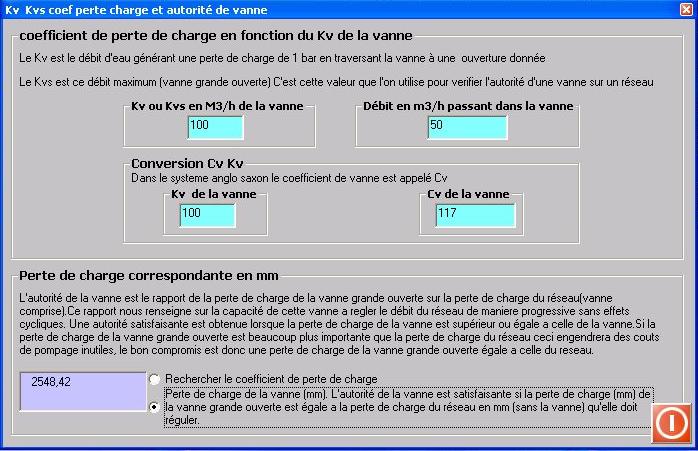For controlling the flow of a section , to balance network branches in parallel, or controlling the flow of an oversized pump, we use a valve. How to choose it ?

The valve must control the flow evenly and not create too much pressure loss to prevent the pumping energy costs. If it is too large it will generate virtually no pressure drop and low cost of pumping, but it will be not very accurate in setting the rate.. If it is too small it will be very accurate but the reduction in diameter will generate a loss, even if the valve is wide open.
A good compromise is reached when the pressure drop of the valve is equal to that of the segment that it must control.
This ability to regulate the section that you want to vary the flow is called the valve authority. This authority is calculated:
Authority=loss of load valve wide open / ( loss of load valve wide open+
Pressure drop of the section, to regulate (at the open valve flow rate ))
This authority should be 0.5 to be adequate. This means that the pressure drop of the valve wide open must be equal to that of the section that must be controlled.
With Mecaflux standard :
To test the authority of a valve, calculate its pressure drop wide open and compare it to that of the section in which it should vary the flow..

Kv and KVS provide information about the flow that will pass through a valve:
- KV is the flow that generates a pressure drop of 1 bar at a given degree of openness .
- KVS is the flow that generates a pressure drop of 1 bar when the valve opening is maximum.
The calculation of valve's KV can therefore be related to the pressure loss
Conversion tool kV KVS and CV valve in mecaflux.
This tool is used to test the authority of a valve for a section, which you computed the head loss, or to establish the KV or KVS or CV of a valve according to his head loss ...
It is accessible from the tool menu of the software.




